Cutting-Edge Physical Therapy Techniques Transforming Care in Seattle
Physical therapy in Seattle is evolving rapidly, with new techniques and approaches emerging to enhance recovery and improve patient outcomes. In this blog, we'll explore some of the most innovative practices being used today, making physical therapy more effective, enjoyable, and accessible for everyone.
The Role of Technology in Physical Therapy
Technology is revolutionizing physical therapy practices in Seattle. From telehealth sessions that allow for remote consultations to wearable devices that monitor patient progress, technology is making therapy more convenient and personalized.
Moreover, our mobile app takes the guesswork out of your physical therapy journey, making it easier, smarter, and more connected. You can access video-guided home exercise programs tailored to your recovery, which means you’ll have the right tools at your fingertips. Track your pain levels over time and seamlessly schedule appointments right from your phone. The app even syncs with Apple Health to pull in valuable heart rate and sleep data, giving your Doctor of Physical Therapy a fuller picture of your progress. Plus, with direct messaging to your therapist, you can receive personalized feedback, adjustments, or just a bit of motivation—keeping your care on track, no matter where you are!
At Bespoke Physical Therapy, we combine force, motion, and metabolic analysis to create a complete picture of each patient’s current performance. By measuring strength output, movement quality, and metabolic efficiency, we establish clear baseline data that reveals both strengths and areas of weakness or points where performance is breaking down. This objective information allows us to design highly targeted treatment and training plans, ensuring every exercise and recovery protocol addresses the patient’s specific needs. Over time, we re-test these same metrics to track progress, identify new challenges, and make data-driven adjustments so the program evolves with the patient, maximizing results and long-term success.
Holistic Approaches: Integrating Mind and Body
More practitioners are recognizing the importance of treating the whole person, not just their physical symptoms. Integrating mindfulness, yoga, and other holistic practices into therapy sessions is enhancing the recovery experience for many patients.
The mind-body connection is a powerful tool in healing. Techniques such as guided imagery and deep breathing exercises help patients reduce anxiety and increase their overall sense of well-being. By focusing on both mental and physical health, therapists in Seattle are fostering a more rounded approach to recovery.
Additionally, we work with local nutritionists in Seattle to help integrate nutritional counseling into our programs, recognizing the key role that food plays in overall health and recovery. Patients are learning about anti-inflammatory diets and how proper nutrition can significantly support their therapy goals.
This holistic integration has not only made therapy more comprehensive, but it has also opened doors for patients to engage in their health in new ways. As they learn techniques for mindfulness at home, they’re not just passive recipients of care; they’re active participants in their journey toward recovery.
Advanced Manual Therapy Techniques
Manual therapy techniques, including myofascial release and joint mobilization, are gaining popularity for their effectiveness in relieving pain and restoring function. These hands-on approaches are tailored to the individual needs of each patient.
Myofascial release, for instance, targets the fascia - the connective tissue that surrounds muscles and organs. By releasing tension in this area, many patients experience immediate relief and greater mobility. This personalized touch allows therapists to focus on problem areas that may not respond well to traditional exercise alone.
Joint mobilization techniques, in particular, play a crucial role in improving joint function. By carefully guiding joints through their natural range of motion, therapists can help alleviate stiffness and pain. This is especially beneficial for patients recovering from surgeries or dealing with chronic pain conditions.
Percussive therapy, instrument-assisted soft tissue mobilization (IASTM) such as Graston, and orbital massage devices are becoming increasingly popular for their ability to improve blood flow, boost circulation, and decrease muscle tension. These advanced tools allow therapists to deliver targeted treatment that addresses tightness, knots, and restricted tissue in ways traditional stretching or exercise alone may not achieve. Percussive therapy uses rapid, controlled pulses to stimulate deep muscle layers, helping reduce soreness and promote faster recovery. IASTM techniques like Graston use specialized instruments to break up adhesions and improve tissue mobility, while orbital massage devices provide a smooth, consistent motion that enhances circulation and eases tension without excessive pressure. By integrating these modalities into care plans, therapists can address problem areas more precisely, accelerate healing, and help patients move and feel better sooner.
These advanced manual techniques are not only effective but also promote a deeper therapeutic relationship between the practitioner and patient. Communication is key, and therapists work closely with patients to understand their sensations and modify the approach as necessary, leading to improved outcomes.
Personalized Exercise Regimens
Customizing exercise plans based on individual assessments ensures patients are engaging in activities that directly support their recovery. At Bespoke Physical Therapy, we take this a step further by using our app to deliver custom, video-guided home exercise programs tailored to each patient’s goals, needs, and physical capabilities. Each exercise is demonstrated with clear visual instruction to promote proper form and reduce the risk of injury, while pain levels are tracked during every prescribed movement so we can make timely adjustments to the plan.
By integrating with Apple Health, our app also measures effort through key metrics like heart rate and activity levels, giving us objective data to monitor progress. This allows us to see exactly how patients are responding to their programs, celebrate milestones, and introduce new challenges when they’re ready. The result is a recovery process that’s not only personalized and data-driven but also motivating, engaging, and built for long-term success.
Community Engagement and Support
Group settings create a sense of camaraderie among participants, who share similar challenges and achievements. As they work together, they provide each other with encouragement, transforming what could be a solitary experience into a collective journey.
Workshops led by our skilled therapists can also educate patients about their conditions and injuries. Patients leave these sessions empowered with knowledge, better equipped to make informed decisions about their health. Understanding the why behind their therapy instills greater commitment and adherence to their individualized plans.
Bespoke Physical Therapy hosts community outings or events, emphasizing the importance of physical activity in everyday life. Whether it's a group hike or a fun run, these activities help reinforce the idea that recovery and wellness can be enjoyable and integrated into daily routines.
Embracing the Future of Physical Therapy
At Bespoke Physical Therapy, our Seattle locations in First Hill and University Village (and soon in Lower Queen Anne) are bringing exciting advancements in care to our community. We combine innovative techniques with personalized, data-driven programs that not only promote faster recovery but also empower our patients to take an active role in their health. Whether you’re recovering from an injury, managing chronic pain, or looking to elevate your physical performance, our expert team is here to guide you every step of the way. There’s never been a better time to experience the difference of truly customized physical therapy in Seattle.


